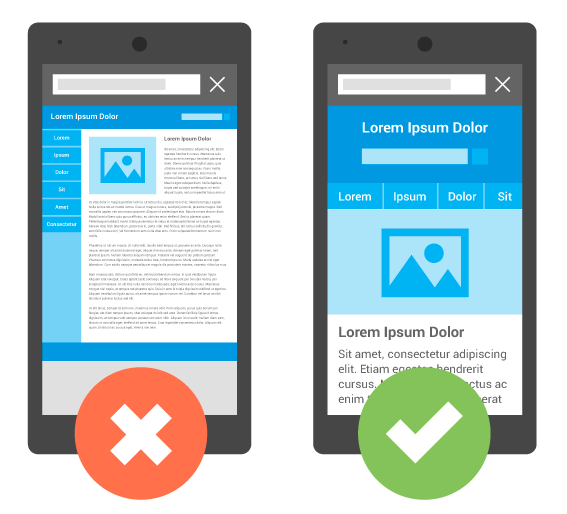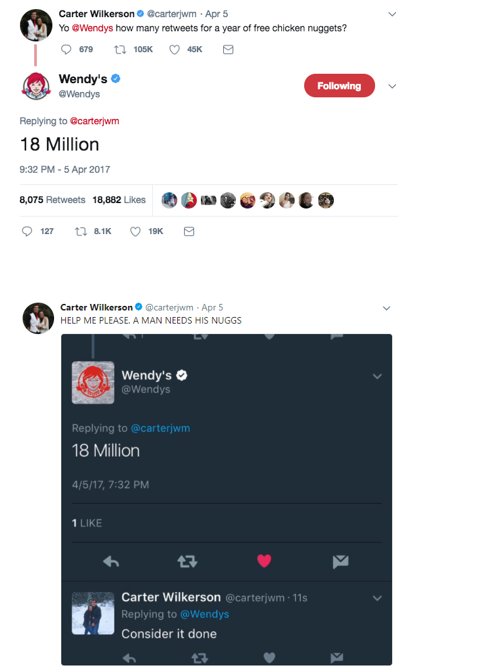The retail revolution, part 5: adjusting retailer strategy for an online/offline world

Now that we’ve covered what the shifting retail landscape looks like, how to track customers offline, how to address offline customers through digital channels, and how to add Amazon to your mix, it’s time we address the stores themselves. As Part 1 of the series described, brick-and-mortar stores are more important than ever, but the role they play for consumers has become complex. These days, a brand is more than just a label on the packaging. Consumers build actual relationships with brands, and the in-store experience is an essential part of that process.
Fun Fact: Over 43% of US adults have participated in “showrooming” (DigitalCommerce360). Instead of fearing showrooming, it’s time we embrace it. Did you know that customers who “showroom” actually spend more? That’s right — according to a study by Medallia, omnichannel shoppers spent 4% more while shopping in stores and 10% more while shopping online. Even more, over time, these shoppers spent 17% more with the same retailer and accounted for 33% more transactions over the following six months, compared to their single-channel counterparts (Forbes). Here’s how you can pull it off.

Build a phenomenal mobile site
It’s time we stop treating mobile as its own siloed channel. Mobile usage surpassed desktops nearly four years ago. Utilize mobile experts to make sure your site and strategy are mobile-first.
Keep the design simple to make it fast and user-friendly.

Make sure to follow Google’s mobile best practices
- Signal to Google if/when a page is formatted for mobile.
- Keep resources crawlable by Googlebots, and do not use robots.txt to block search engines.
- Avoid technical mistakes, such as unplayable content, faulty redirects, and mobile-only 404 errors.
- Use legible font sizes and space elements out appropriately, so you do not need pinpoint-sized fingertips to navigate through the site.
- Do not use interstitials. These can be okay on desktop, but on mobile, they often take up the full screen and are difficult to dismiss.
- Most importantly, make your mobile site speed as fast as possible! According to Google, the average mobile landing page takes 22 seconds to load, but 53% of mobile users have abandoned a site if it took more than 3 seconds to load.
- Take Google’s Mobile Friendliness Test to find out if your mobile site is up to standards, and what you can do to improve it.
If you can’t support a mobile site redesign just yet, try testing Accelerated Mobile Pages (AMP). AMP utilizes page caching and faster rendering to make the page load almost instantly. There is some developer work required, but setup is relatively simple, compared to full mobile web development.
Develop a mobile app to
- Send in-store coupons
- Alert customers of store promotions via push notifications
- Browse products in a simpler, faster format
- Quickly check for items in stock
- Make it even easier to search with a bar code scanner
- Scan QR codes
- Create shopping or wish lists
- Use store locator
- Connect to loyalty/rewards program
- Even pay for items
Walmart Pay is a great example. Just open the Walmart app, enter your PIN, scan the register’s QR code screen, and that’s it!
Offer free in-store pickup
With free shipping becoming increasingly popular, today’s online shoppers will drop hundreds of dollars on an order no problem, but cringe at the sight of $7.99 shipping. If you offer free in-store pickup, those customers may be more inclined to complete the transaction, and you have a secret advantage: you now have the customer in the store again. This is a key opportunity to upsell or encourage impulse purchases.
If you already offer free shipping, free in-store pickup is still a fantastic additional option. Again, you’re bringing your customers back to the store, so show off new products or sales that they can’t resist.
Have a customer loyalty program
Of course, this is great for improving customer retention, building the brand relationship, and driving incremental sales. But remember, customer loyalty programs are also important for tracking offline sales from online advertising. It’s up to you how the program will work exactly, but include these key components:
Collect email addresses
I’ll say it again: you need these to track offline conversions. In order for Google or Facebook to match their users with the customer data in your CRM, there needs to be an email address on record that was collected on a first-party basis through your customer loyalty program.
Collect customer data
If you’re tracking offline conversions, you should have a CRM set up, and if you have a CRM, you should be collecting data. Use these customer insights to determine what types of offers perform best, which products are the most popular among certain segments, which demographics you should focus on, etc.
Send special offers
Chances are, you’ve personally signed up for many rewards programs and/or store newsletters, and have seen your inbox flood with promotional emails. But don’t let the stigma scare you away! This past Black Friday/Cyber Monday weekend, marketing emails had a significantly higher conversion rate than other digital channels (Shopify).
Keep your location listings and contact info on Google My Business, Bing Local, Facebook, Yelp, and more up to date
For one thing, you need to have your locations fully set up and up to date in Google My Business and Facebook for Store Visits tracking to work in AdWords and Facebook Ads, respectively.
Also, it is important for customers to see where the nearest store is, when it’s open, and how to get there – all critical steps to getting the customer in the door.
Keep content king
You’ve probably heard this phrase a million times across marketing blogs, but that’s because it’s true! Content should be part of the brand experience and should serve to build the customer relationship. Some quick content suggestions:
- Create videos that show off product features or the store experience.
- Keep your blog up to date with articles that are interesting and relevant to your customer base.
- Make up quizzes that are fun but can also relate to your product or brand.
Quizzes are especially popular among younger people, whether it’s “Go on a Target Shopping Spree and We’ll Guess Your Height” or “Choose 12 Desserts and We’ll Tell You Which Shoes to Buy.” Plus, a lot of the most ridiculous quizzes get shared most frequently – hello, organic reach!
Have a strong social presence with a clear brand voice
On average, we spend over six hours per day online, half of that on social media (Hubspot ebook). What’s more, customers who engage on social media spend about 30% more, on average (Bain & Company). Not only is social media a major touchpoint with consumers, but it’s the most effective channel for building a brand relationship due to its interactive format.
Post engaging content that encourages dialogue with your customers. Ask questions, have people share their opinions, etc. – people love to feel like they are being heard!
Establish your brand voice. Don’t be afraid to be sassy if it’s that’s your brand.
Wendy’s, for example, completely owned their brand voice on Twitter last year, and they ended up being the star of the most-retweeted tweet of all time. #nuggsforcarter

Take customer service to the next level on social media
No matter how catchy your hold music is, nobody wants to sit on the phone line, waiting for the next available customer service representative. That’s why many customers are taking to social media for customer service. Use Twitter, Facebook comments/direct messages, etc., as additional outlets for customers to share their feedback or resolve their issues. Respond to these customers through their preferred social media outlet to help turn their concern into a positive interaction.
Encourage in-store customers to get out their phones
More than 90% of retail shoppers admit to using their phones in the physical stores (Marketing Land). Beat them to the punch by showing in-store customers what they want to see online.
- QR codes can be used on product displays to bring users directly to the item page with information and customer reviews. Or you can use QR codes to direct users to download your cool new app.
- Custom landing pages and/or vanity URLs on signage can bring customers to a page with special in-store promotions or coupons – without putting customers through the hassle of typing in your entire website URL.
- Or, rather than having customers take out their phones, put your own screens in front of them. Install iPads or touchscreens for customers to learn more about the products.
Last year, Sephora opened a NYC store location with their new Beauty TIP concept, which includes dozens of iPads in place for customers to virtually test different products (Retail Leader).
Turn the physical store into a brand experience
- Train your staff to be engaging and knowledgeable. No matter how fantastic your marketing efforts are, your sales associates are essential to seal the deal. More than half of customers are looking for expert advice when they enter a store, and well-versed sales associates tend to sell up to 123% more than their undertrained counterparts (Forbes).
- Embrace the brand’s niche.
- LEGO was ranked as the #1 store in Reputation.com’s 2017 Retail Reputation Report. Why? Their fun, hands-on, high-energy store experience embodies “everything is awesome.”
If you’re strictly ecomm, consider pop-up shops
This is a great alternative to give customers the full brand experience without the long-term overhead costs. They also give you the flexibility to where your best or highest potential customers are, and bring enthusiastic, knowledgeable sales associates to areas where you’d like to grow.
Get on board with Amazon
It’s finally time to address the elephant in the room. Yes, you should be using Amazon to your advantage. If you try to fight it, you’re going to lose out on sales opportunities, and who wants to do that?
- As of last year, 64% of US households have an Amazon Prime membership, and 4 out of every $10 spent online was through Amazon specifically (Forbes). If you’re going to address customers using their phones to comparison-shop, intercept them where most of them can be found: on Amazon.
- If you’ve been following this series, you’re already well-versed on how to address Amazon in your strategy. If you’re late to the party, start from the beginning!
And just like that, you’re now ready to be released back into the wild world of retail, chock full of omni-channel strategy ideas for your brand. Through this series, we have covered:
- The importance of brick-and-mortar stores in the new era of retail
- How to track offline sales from online activity
- Different ways to address physical stores in your digital strategy
- How to work Amazon specifically into your retail strategy
- And finally, how to adjust your in-store retail strategy to make the digital world work in your favor
Now it’s up to you to bring these new ideas to the table, so your brand can grow stronger than ever in this new age of retail.

